Viewing Cost
Lamont Eddins
As you would see in an individual project in the Projects Module, you receive a complete breakdown of the various costs that are associated with projects. You can gather information related to specific costs entirely and determine how individual project costs help calculate the tallies on the dashboard. Cost can be viewed by:
- Original Estimated Cost: View all estimated projects cost
- Forecasted Cost: View all predicted projects cost
- Approved Cost: View all approved projects cost
- Total Committed Cost: View all projects cost of work
- Total Incurred Cost: View all projects invoiced work
- Variance Cost: View all projects price difference incurred cost and original estimated cost
You can download the data and email reports to recipients.
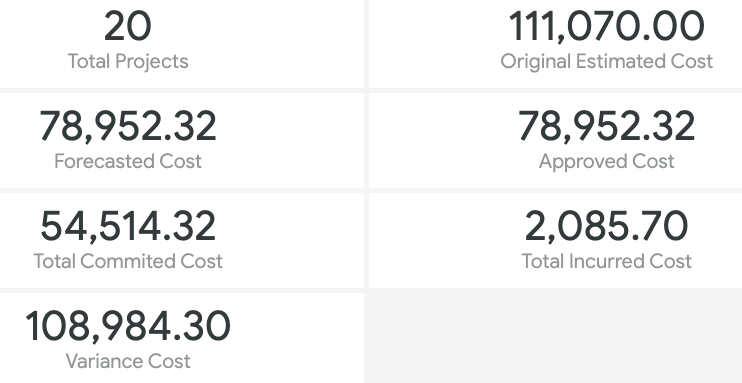
Viewing Original Estimated Cost

When you are creating a project, an Original Estimated Cost is provided. The number on the dashboard represents the total amount for all projects original estimated cost. You are able to identify how each project supports the number on the dashboard.
- Click the numerical value above the words Original Estimated Cost to open the list of projects
- A modal appears with a list of all the projects totaling the number on the dashboard
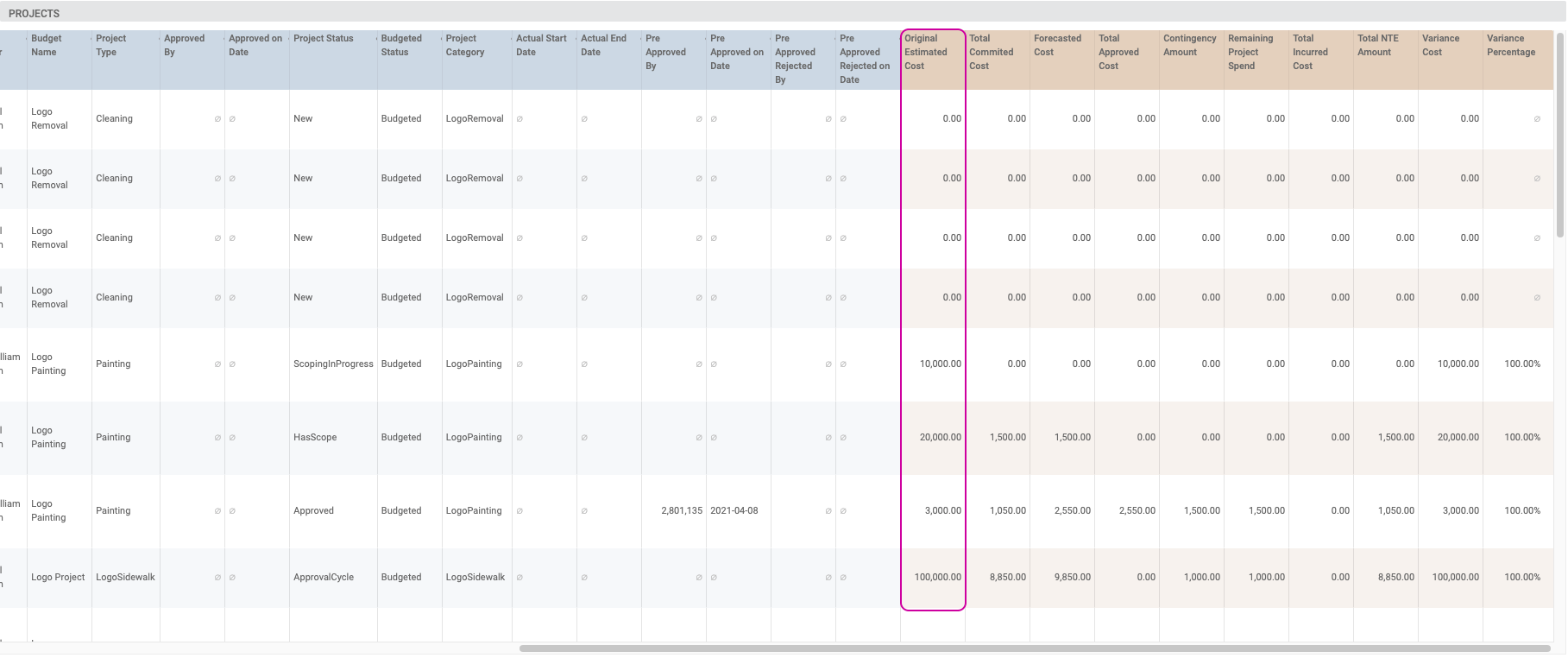
Viewing Forecasted Cost

When you are creating a project and starting to add tasks, that creates a Forecasted Cost. Meaning, based on the work that needs to be done, how much will it actually cost. Forecasted cost allows you to visualize the amount on the dashboard by viewing how each individual project helps create the total amount.
- Click on the numerical value above the words Forecasted Cost to open the list of projects
- A modal appears with a list of all the projects totalling the number on the dashboard
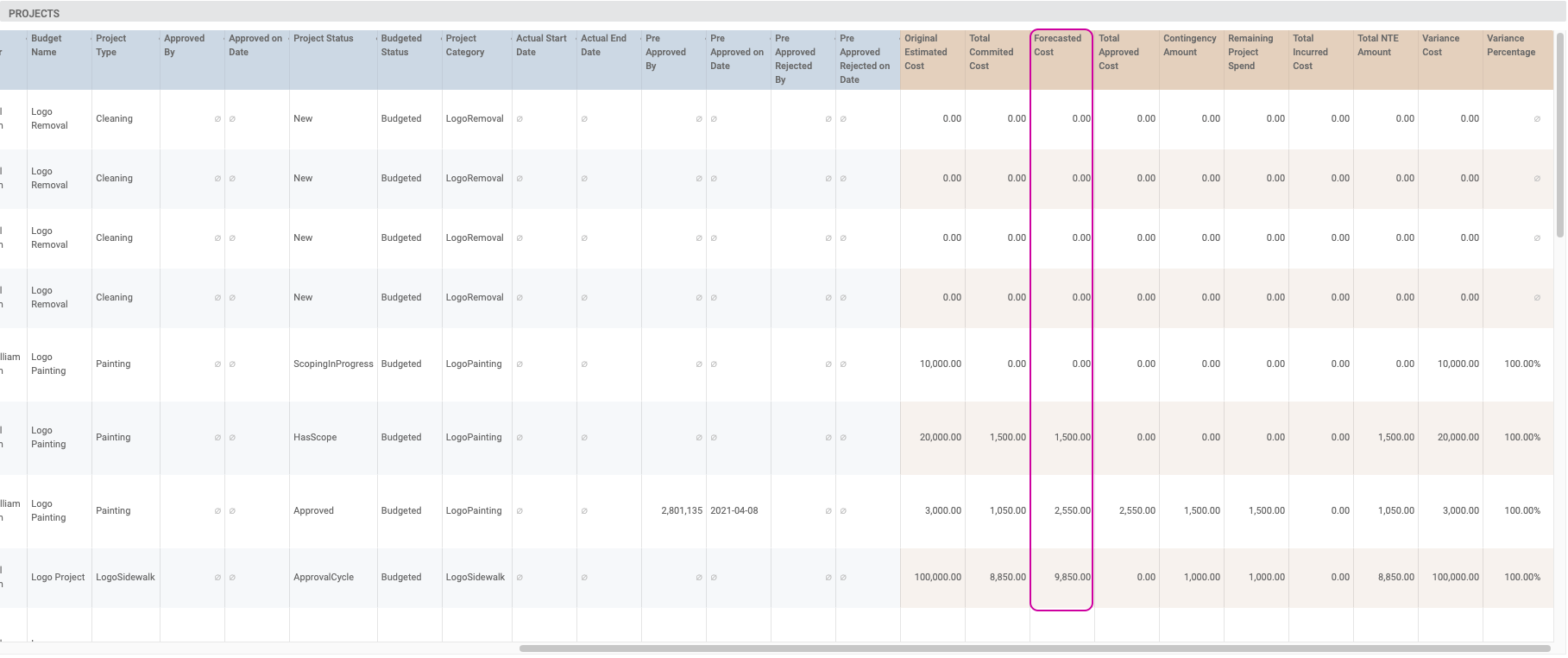
Viewing Approved Cost
A cost for a project must be approved in order for it to be considered and proceed through the project lifecycle. Approved Cost represents the amount a project was approved based on what was forecast. This amount is for all the projects approved cost.
- Click on the numerical value above the words Approved Cost to open the list of projects
- A modal appears with a list of all the projects totalling the number on the dashboard
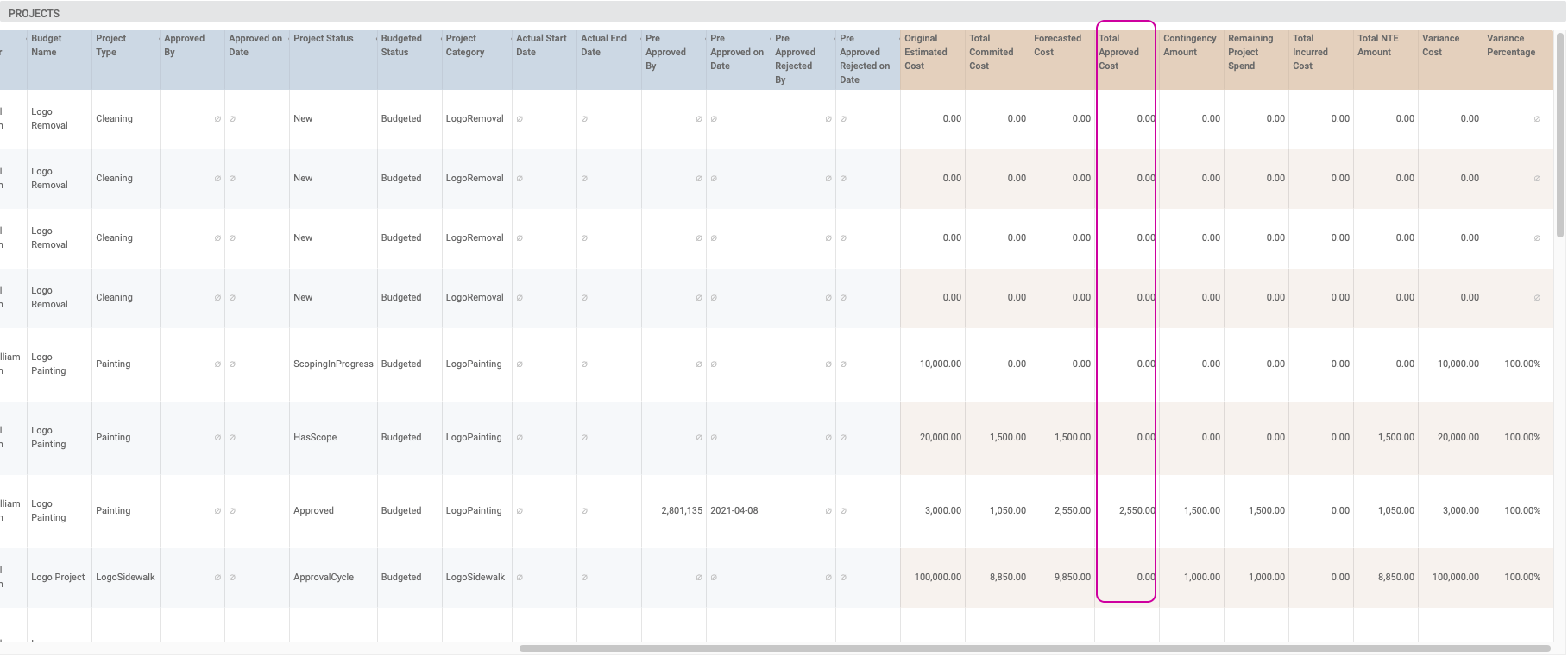
Viewing Total Committed Cost

Total Committed Cost is a project’s total NTE. Every project committed cost will vary based upon the significance of the project. When viewing committed cost on the dashboard, the number reflects all the projects' NTE.
- Click on the numerical value above the words Total Committed Cost to open the list of projects
- A modal appears with a list of all the projects totalling the number on the dashboard
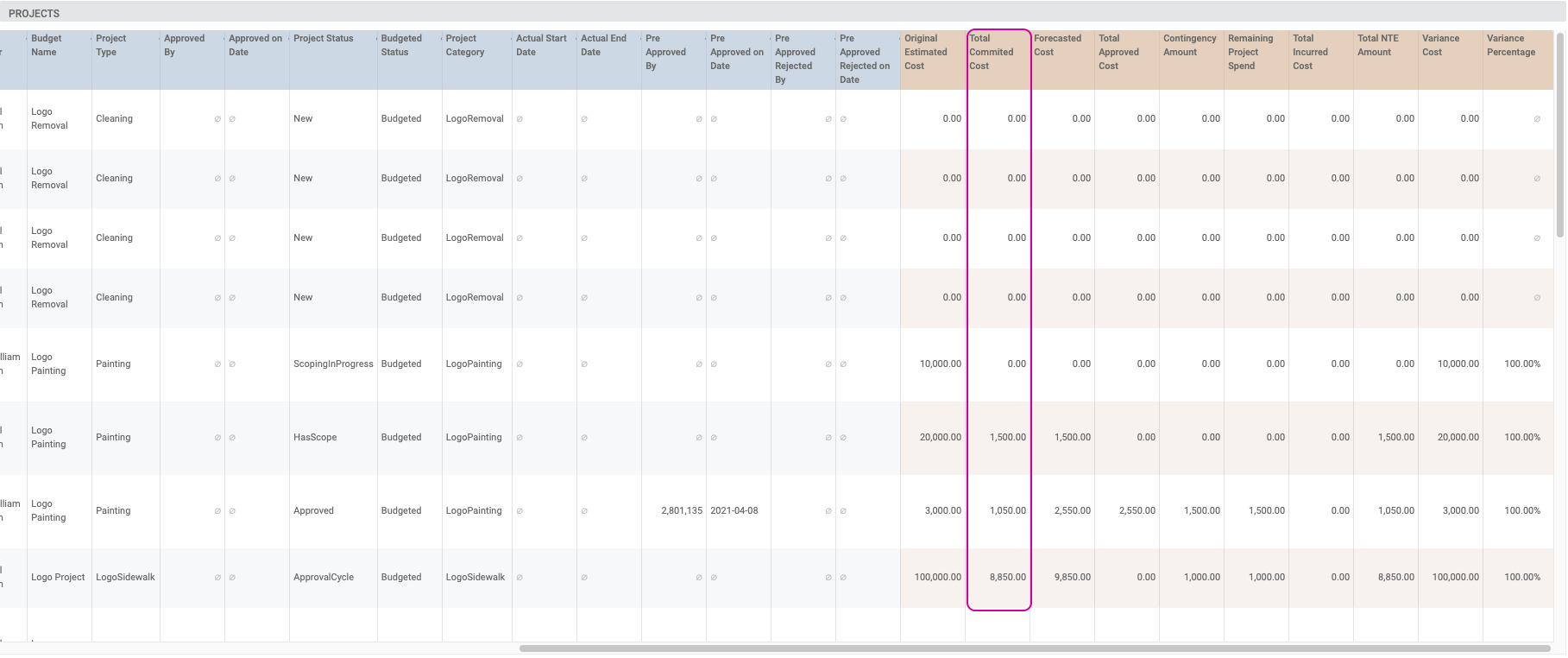
Viewing Incurred Cost

Once tasks are finalized, they are invoiced and now become part of the Total Incurred Cost. Each project will have incurred costs as it relates to the individual project. The total amount of the dashboard compross of incurred costs for all projects.
- Click on the numerical value above the words Total Incurred Cost to open the list of projects
- A modal appears with a list of all the projects totalling the number on the dashboard
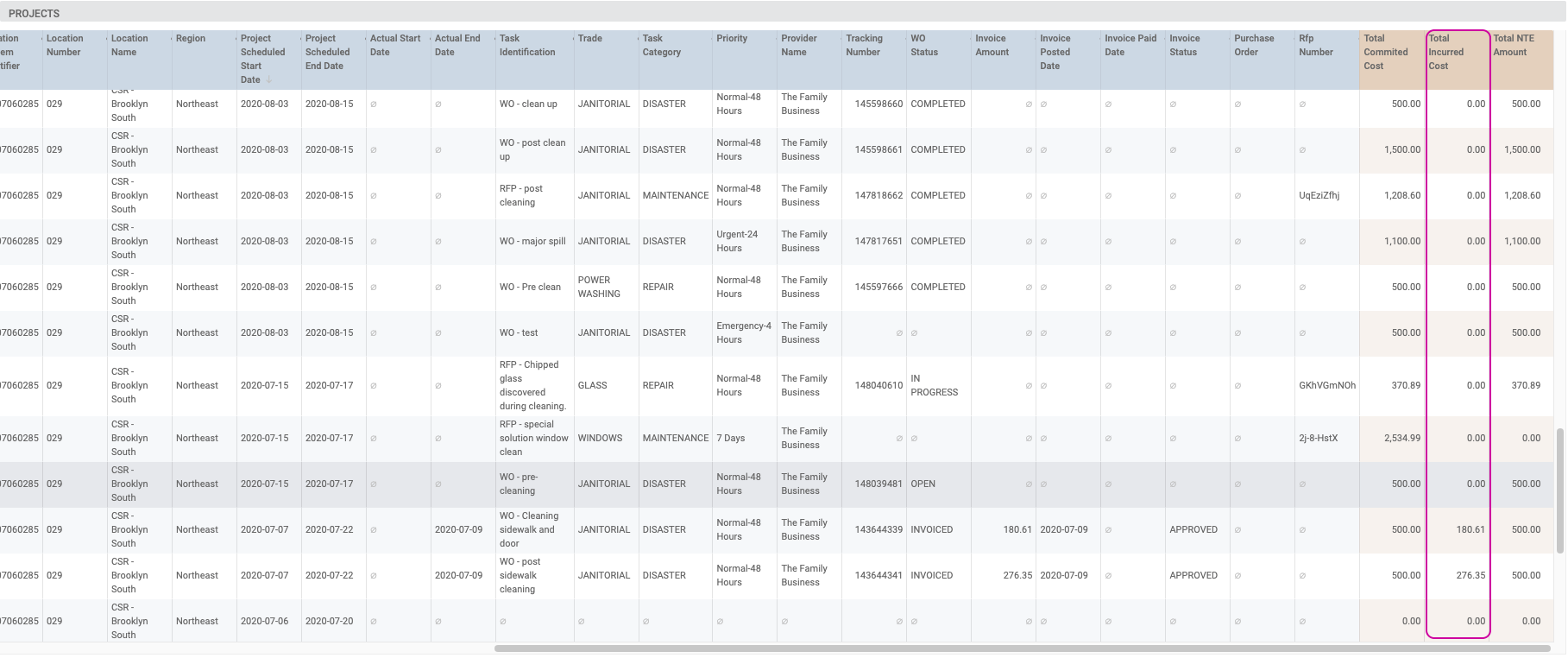
Viewing Variance Cost

Once a project has been completed, you can determine the Variance Cost. Determining the variance cost comes from subtracting the incurred cost from the original estimated cost. The number on the dashboard reflects the variance cost of all the projects.
- Click on the numerical value above the words Variance Cost to open the list of projects
- A modal appears with a list of all the projects totalling the number on the dashboard
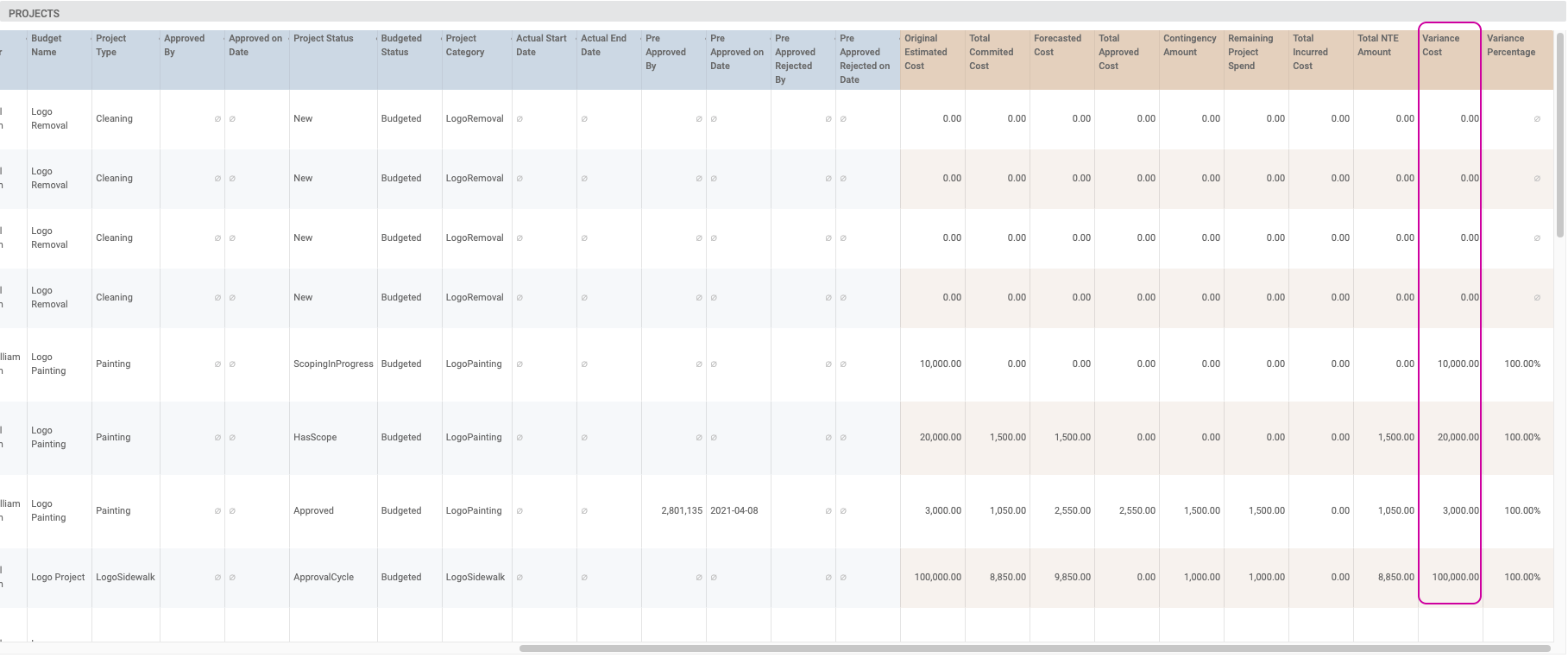
Below is a quick reference guide regarding tracking numbers in Analytics, filtering, sorting, downloading data, and sending reports. Throughout Analytics you can drill down into visualizations to see the underlying data. In most cases, the tracking numbers related to that data are listed. You can click the tracking number to navigate straight to the work order details in Service Automation. On top of the report are all-inclusive filters to help you hone in on key data. All reports on the page are affected by the criteria set in these all-inclusive filters. The filter criteria for each dashboard may differ. Filters reset to the default when the page is refreshed. Click filter field to show the criteria. Select the desired criteria to include or exclude: To Include criteria: select is equal to, contains, starts with, or ends with, and then begin typing the criteria in the picklist. Select the desired criteria (or multiple criteria) from the picklist. To exclude criteria: select is not equal to, does not contain, does not start with, or does not end with. Is null depicts the absence of data in a data set. Conversely, is not null depicts the presence of data To include or exclude data without a certain data criteria — for example, to select data without a Region or District assigned in Service Automation — choose is blank / is not blank. To add more options, click the plus sign (+) next to a field to add another option to the filter. The new option will appear as either an OR condition or an AND condition, depending on the type of filter option. Once all criteria are selected, click Refresh icon in the top-right corner. The Dashboard report updates with the selected criteria. More details are available on Filtering an Analytics Dashboard Analytics tables are dynamic, as you can: In the upper-right corner of any page, click the Vertical Ellipses to download reports, schedule delivery of reports at regular intervals, add to a board, or get a link. You can download data from a table and visualization or download a dashboard tabto PDF or CSV. Select the desired File Format and choose a File Name: A default name is listed but you can change it. On the desired dashboard (or dashboard tab), click the Gear icon in the upper-right of the page, and then click Download as PDF. The Download modal appears. A default Filename appears, but you can change it. Under Advanced options: Single-column format lays out all tables and visualizations on a page into one column in the PDF, as opposed to how it is laid out in the dashboard. Expand tables shows all rows in a table, instead of just the rows that appear on the dashboard. Paper size adjusts the PDF to your desired size. Click Open in Browser to view the PDF in your chosen browser, or click Download to save a version of the report onto your device. On the desired dashboard (or dashboard tab), click the Gear icon in the upper-right of the page, and then click Download as CSVs... A new browser tab opens. After the files render, you are prompted to save the CSV Zip file onto your device. More details are available on Downloading and Sending Dashboards and Reports You can also Send a one-time report via email or Schedule a recurring email send. On the desired dashboard (or dashboard tab), click the Gear icon in the upper-right of the page, and then click Send. The Send (Dashboard Name) modal opens. A Title is given by default, but you can change it. Under Who should it be emailed to?, enter the desired recipient(s), separated by a comma, and then click Add. (Optional) Click Include a custom message to add a personal note. Under Format data as, choose PDF, Visualization, or CSV Zip file. (Optional): Click Filters to limit the criteria that appear in the email. Note that the same filters on the dashboard itself will also appear here. Click Send. The email is sent to your recipients. On the desired dashboard (or dashboard tab), click the Gear icon in the upper-right of the page, and then click Schedule. The Schedule (Dashboard Name) modal opens. A Title is given by default, but you can change it. Under Who should it be emailed to?, enter the desired recipient(s), separated by a comma, and then click Add. (Optional) Click Include a custom message to add a personal note. Under Format data as, choose PDF, Visualization, or CSV Zip file. Under Deliver this schedule, choose Daily, Weekly, Monthly, Hourly, or By minute (in 5-minute increments, up to 30 minutes) (Optional): Use Filters to limit the criteria that appear in the email. Note that the same filters on the dashboard itself will also appear here. Click Send. The email is sent to your recipients. More details are available on Downloading and Sending Dashboards and ReportsCommonly Used Features
Tracking Numbers in Analytics
Filtering Dashboards
![]()
Dynamic Table Sorting
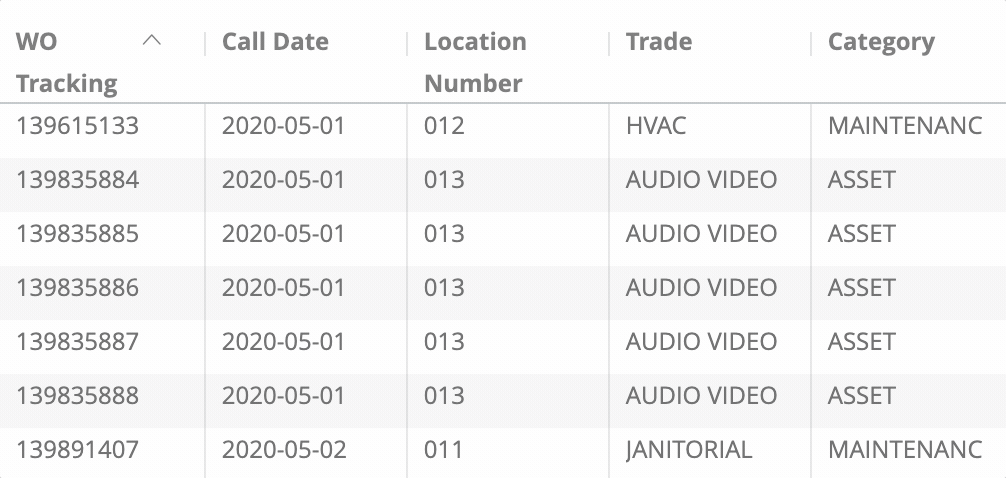
Downloading and Sending Reports
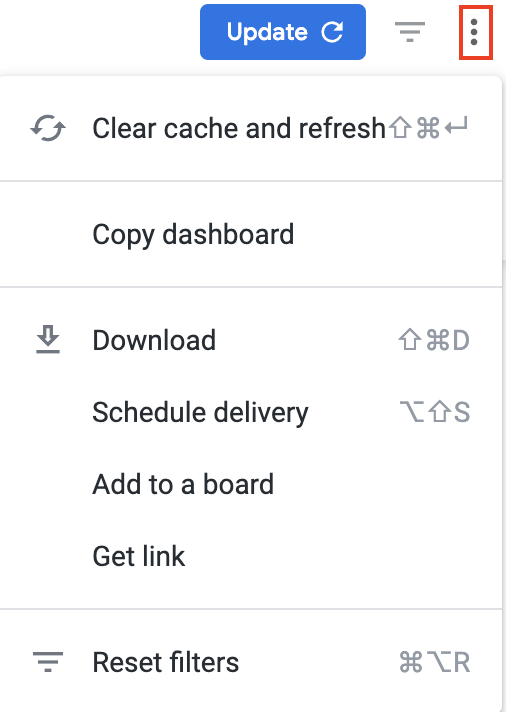

-
Page:
-
Page:
-
Page:
-
Page:
-
Page:
-
Page:
-
Page:
-
Page:
